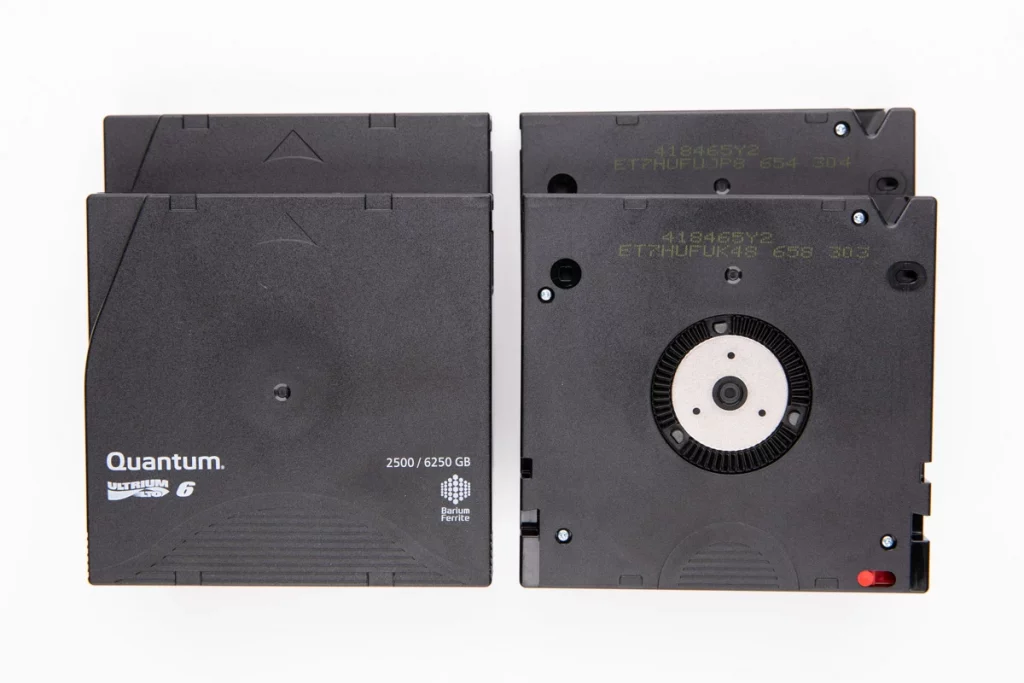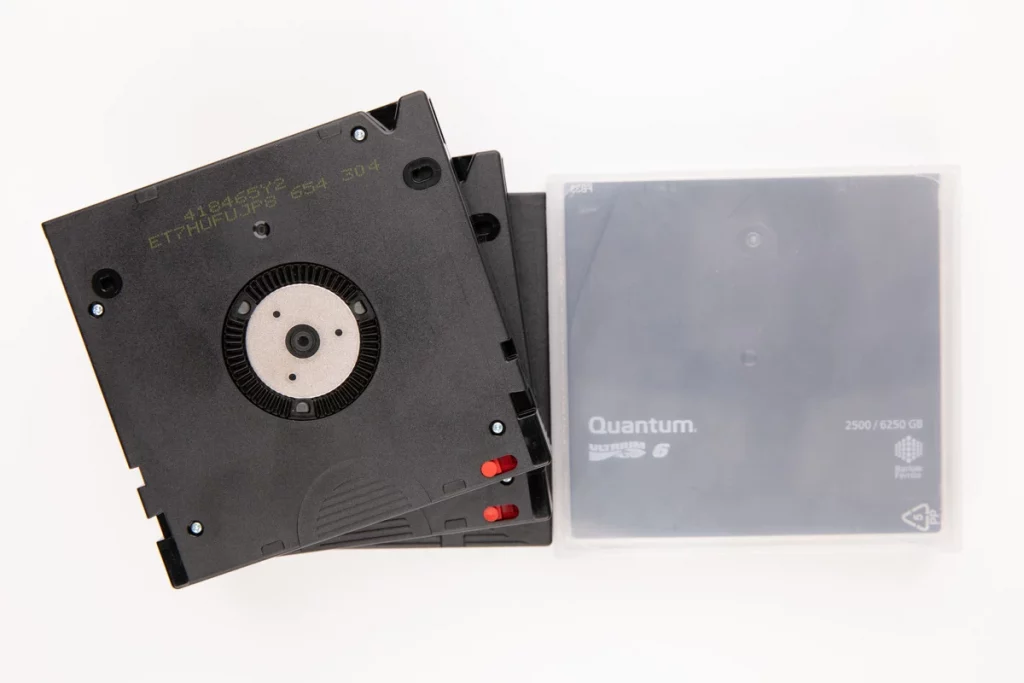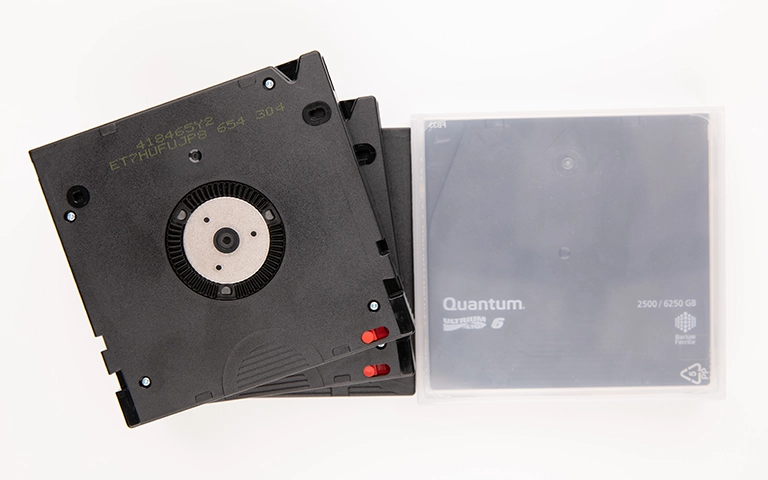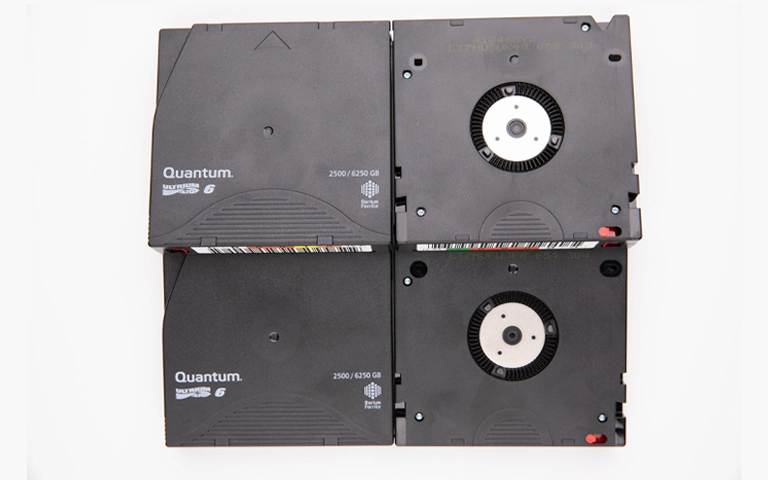In today’s digital age, it is easy to overlook the importance of data storage and backup solutions. However, these technologies play a crucial role in keeping our information safe and accessible. One such technology is the tape drive, which has been around for decades and is still widely used by organizations today. In this blog post, our team will explore what a tape drive is, whether it is suitable for regular usage, where organizations use it, and its advantages.
What is Tape Drive?
Magnetic tape has been used for data storage since the 1950s and was once the primary storage medium for mainframe computers. A tape drive is a data storage device that uses magnetic tape to store and retrieve digital information. It consists of a tape head that reads and writes data, a motor that moves the tape, and a mechanism for loading and unloading it.
Tape drives are not commonly used for personal or small business use. Instead, they are typically used in large-scale environments like data centers, research institutions, and government agencies. These organizations have a significant amount of data they need to store and back up regularly, and tape drives provide a reliable and cost-effective way.
For What Do Organizations Use Tape Drives?
Long-Term Storage
Tapes can store data for decades without the risk of mechanical failure, unlike hard drives or solid-state drives, which have a limited lifespan. This makes tape drives ideal for archiving important data that needs to be kept for a long time.
Cost-Effective
Tape drives are significantly cheaper than hard drives or solid-state drives, especially considering the cost per gigabyte of storage. This makes them an attractive option for organizations that need to store large amounts of data but have a limited budget.
Scalability
Tape drives can easily scale to meet the growing storage needs of an organization. When you run out of space on one tape, you can add another to the tape library. This makes tape drives a flexible and adaptable storage solution.
Reliability
Tape drives are designed for reliability and can withstand extreme conditions, such as high temperatures and humidity. This makes them ideal for organizations that operate in harsh environments, such as oil rigs or mining facilities.
Advantages of Using Tape Drives
Lower Cost
As mentioned earlier, tape drives are significantly cheaper than hard or solid-state drives. This makes them an attractive option for organizations that need to store large amounts of data but have a limited budget.
Long-Term Storage Capacity
Tape drives can store data for decades without the risk of mechanical failure, making them ideal for archiving important data that needs to be kept for a long time.
Reliability
Tape drives are designed for reliability and can withstand extreme conditions, such as high temperatures and humidity. This makes them ideal for organizations that operate in harsh environments.

Scalability
Tape cartridges can easily scale to meet the growing storage needs of an organization. You can add another to the library when you run out of space on one tape.
Security
Tape drives are a secure way to store data because they can be physically removed from the drive and stored in a safe location. This makes them an ideal solution for organizations that need to comply with strict data privacy regulations.
Are Tape Drives Still Used?
Tape drives are a reliable, cost-effective, and scalable way to store and back up large amounts of data. While they may not be suitable for personal or small business use, they are essential to many large-scale environments, such as data centers and research institutions.
With their long-term storage capabilities, scalability, and reliability, tape storage remains popular for organizations that need to store and back up large amounts of data. One thing to keep in mind is that tape systems require regular maintenance, including cleaning and calibration, to ensure that they continue to function properly.

Organizations that use tape media should have a plan in place for regular maintenance and should monitor the condition of the tapes to ensure that they are still readable.
It is also worth noting that tape drives are not a standalone data storage and backup solution. To create a comprehensive backup strategy, they should be used with other storage technologies, such as hard drives or cloud storage.
While tape drives may seem outdated in today’s digital age, they still have a vital role in data storage and backup. Organizations that need to store and back up large amounts of data can benefit from the cost-effectiveness, reliability, and scalability of tape drives. While they may not be suitable for personal or small business use, tape drives remain an essential component of many large-scale environments and will likely continue to do so for years to come.
Frequently Asked Questions
What is tape drive recovery?
Tape drive recovery involves recovering data from damaged or inaccessible tape storage with specialized equipment and expertise, ensuring data integrity during the process.
What are common reasons for needing tape drive recovery?
Common reasons include physical damage to the tape, exposure to extreme conditions (heat, moisture), magnetic fields, accidental formatting, or corruption due to software/hardware failure.
How long does tape drive recovery take?
The duration of tape drive recovery can vary widely based on the severity of damage, type of tape, and capacity of data stored. It could range from a few days to several weeks.
Is tape drive recovery guaranteed to succeed?
While recovery experts employ advanced techniques to maximize the chances of success, recovery cannot be guaranteed in every case. The success rate largely depends on the condition of the tape and the nature of the damage.
Can recovered data be transferred to more modern storage solutions?
Yes, once data is recovered from a tape drive, it can be transferred to more contemporary storage solutions, such as hard drives, SSDs, or cloud storage, ensuring easier access and safer backup options.
Related Blogs

What is an LTO Tape?
